Myths and Realities of the Svalbard Global Seed Vault
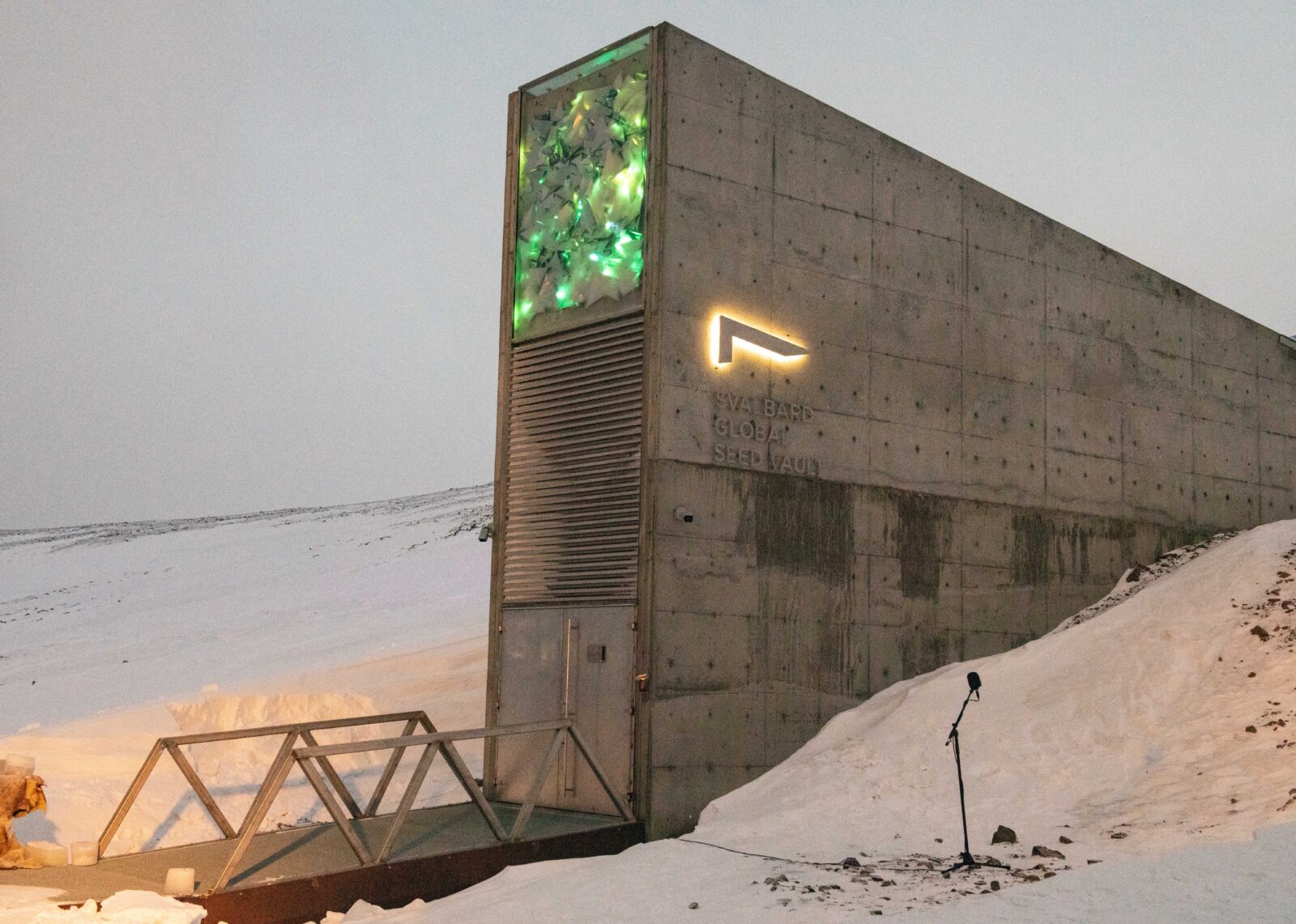
An interview with Cary Fowler, by Martin Teitel
I first met Cary Fowler 35 years ago when, along with Pat Roy Mooney and Seed Savers Exchange board member Hope Shand, he was instrumental in creating the crucial triangle of global crop diversity, farmers’ rights, and open access to seeds. Since then, Cary has worked on these issues all over the world. As executive director of the Global Crop Diversity Trust, he facilitated the establishment of the Svalbard Global Seed Vault. He is the recipient of many awards and honors from sources as diverse enough to include the Russian Academy of Sciences and Bette Midler.
Since many of us at Seed Savers Exchange consider Cary to be one of the “family”—he has been on the SSE board and has advised us and spoken at the SSE Conference and Campout—I thought he’d be the best resource to help us understand what Svalbard is and isn’t.
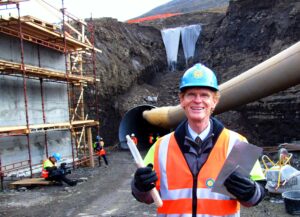
Martin Teitel: Cary, aside from variations in weather and the size of the collections, what are the differences between the SSE seed bank in Decorah, and the Svalbard seed vault? And why did you pick such an unusual location? As a southerner, do you love the cold that much?
Cary Fowler: Norwegians have a saying: there is no such thing as bad weather, there’s just bad clothes. I don’t mind the cold. In fact my favorite time to visit is in the dead of winter. But I have Norwegian clothes.
SSE’s seed bank and the Seed Vault are similar in many ways. Both primarily function as an insurance policy for other forms of conservation. In the case of SSE, that would be varieties grown yearly by gardeners. With the Seed Vault, its seed samples held by seed banks, such as the Dutch, Philippine, or Kenyan national facilities, or SSE. The Seed Vault, however, was physically built to last as long as anything on earth. Its location is obviously remote, which adds to its security. Svalbard is under Norwegian sovereignty, which reassures many, and it was no small matter that Norway offered to pay the entire cost of construction.
Given the natural temperature of the permafrost deep inside the mountain in Svalbard (about -4°C), the facility is much less reliant than any other in the world on mechanical refrigeration and electricity to achieve the optimal temperature which is -18°C. And the insulation is pretty good, too! In fact, the Vault virtually runs by itself—we have no staff on site. That lowers costs, which increases sustainability. The modest funding required is secured by virtue of an endowment (which allows the Vault to offer free storage), and the facility itself offers physical security second to none. Inside a mountain in this remote and cold location, the seeds are as safe as they could be on this planet.
Keep in mind that many of the samples held in Svalbard are of varieties no longer grown by farmers. In situ, or on-farm, conservation is not a realistic conservation option for these. Moreover, as we know, that form of conservation has its own set of risks. So, it is vitally important that all our different conservation efforts, whether in the garden or in the seed bank, be supplemented by a facility such as the Seed Vault.
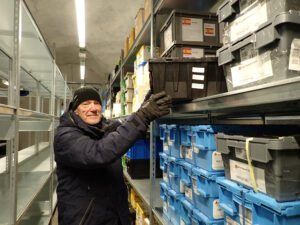
MT: I’ve read accusations that Svalbard was built to benefit monoculture companies like Monsanto or prominent people like Bill Gates. Is there any basis for these criticisms, and do you have any idea why people would attack a seed vault?
CF: It was built to conserve diversity, not to promote genetic uniformity! If we don’t promote diversity by conserving it, how do we do it?
The context in which the Seed Vault was conceived and built was and is that we are losing diversity both in farming systems and also in seed banks. We wanted to put an end to the modern-day extinction of crop diversity. So we conceived of a facility that would provide incredibly safe storage for duplicate copies of the samples that the many seed banks around the world are attempting to conserve. If a depositing seed bank loses their own sample, there’s another—a duplicate— in the Seed Vault. Only depositors have access to the seed, and they only have access to the seed samples they themselves have deposited in the Seed Vault. Neither Monsanto nor Bill Gates have deposited seeds, thus they have nothing to access. It’s really that simple. This arrangement is formalized through contracts and watched closely by several international bodies, and of course by the depositors themselves. There is no transfer of physical or intellectual property rights from the depositor to the Seed Vault. The depositor continues to own their seeds. In fact, we at the Vault never open the boxes or packages sent by the depositor. Of course, participation is voluntary—there is no requirement that seed banks participate, but there is really no reason not to.
I am aware of the conspiracy theories and “concerns” that have surfaced around this rather iconic but generally off-limits facility built near the North Pole. It was probably inevitable. With sadness, I chalk this up to the cynicism that so many people feel these days about almost any attempt to do something good and big. “If it’s in the news, positive, and governments are involved, there must be something sinister going on behind the scenes that THEY are not telling us about.” That’s how some people feel. And then they abandon their skepticism and accept without question the most outlandish things they find on the internet. Because many people don’t like Monsanto, Monsanto-related theories are particularly persistent, though the company has had absolutely no involvement.
Gosh, hundreds of media, including famous investigative reporters, have visited the Seed Vault, and none have found anything bad to say about the effort. None. And the fact remains that the facility has now been operating seven years. It’s protecting samples of 864,000 crop varieties today. And there hasn’t been a single case—or even one specific allegation—that a single sample has been lost, has been managed improperly, or to be explicit, has gone to Monsanto or Bill Gates, even once. And that’s because none have. Bill Gates—at our request and initiation—provided some of the funding to help developing countries multiply and ship their seeds to Svalbard and in so doing provided a tremendous service to those countries and to the cause of conserving diversity. I applaud him for it. But, it still doesn’t give him favored treatment or access to the seeds. And he’s never asked for it, or even visited.
I don’t buy the conspiracy notion that saving diversity is bad for diversity! That’s not science; that’s just nutty politics. And that, I suppose, explains why a few people who’ve never visited the Vault attack it. Conspiracy theories and nutty politics will always appeal to a few. There is, however, a wonderful saying that comes from the Middle East that I whisper to myself when I hear or read this craziness: the dogs bark but the caravan moves on. And the Seed Vault continues to make sure that a lot of previously vulnerable diversity is safe.
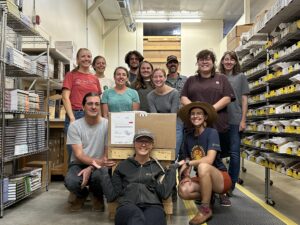
MT: What’s with people calling your project the Doomsday Vault? Did you really set up the vault for some kind of apocalypse? Maybe it’s about climate change, and if so, how?
CF: “Doomsday Vault” was how a magazine headline writer described it many years ago. In planning the facility we were not thinking that the world needed a doomsday vault to protect against a global catastrophe, though perhaps this facility might help—who knows? We were focused on and worried about the losses that we were experiencing in seed banks due to mechanical failures, human mistakes, poor funding, and the like. Also, we were well aware that the world is a dangerous place and that sometimes a seed bank gets caught in the middle of civil strife or a war. That’s the problem we were looking to solve.
The opportunity we were looking to preserve or create was to save the diversity that would enable agriculture to continue to evolve and adapt. Without diversity, there is no adaptation, and without adaptation, extinction is inevitable. Domesticated crops don’t “get a pass.” The biggest challenge they now face—or in my opinion, have ever faced—is the challenge of adapting to climate change. The diversity safeguarded in Svalbard represents the evolutionary options that our crops have for the future. And that’s true even if there’s no climate change. In one word, the Seed Vault was all about preserving options.
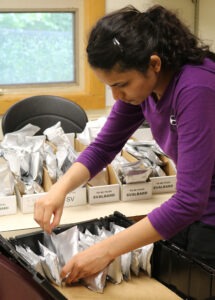
MT: Finally, Cary, it’s the 40th year of the Seed Savers Exchange. Can you share with us what you see as the future of seed saving in the U.S.?
CF: The seed saving “fad” is now 40 years old. Or 12,000. Depends on when you start counting. Regardless, it’s not about to come to an end.
In the U.S., I think seed saving could grow in size and importance particularly in the context of global warming and climate variability. Historically, heritage varieties were fashioned and conserved because they had certain valued properties and because they were adapted to local conditions. Those conditions are now changing rather rapidly.
Even more than in the past, seed savers will need to be on the lookout for chance mutations to encourage adaption of their favorite varieties. Saving a variety “as is” may not always be the only goal, or even an option. Some good seed savers will even want to develop new varieties that will become the future’s heritage varieties, just as they have historically. The need, skill, and privilege of doing such things was not something that disappeared just before we were born! We should be conserving our rich agricultural heritage, which SSE and Svalbard and individuals help to do, but we also should be adding to this heritage. If we do—if we see that as part of the larger mission of seed saving—then the future is bright in so many ways and terribly exciting, and what we do will be so important.
NOTES:
In 2024, Cary Fowler was awarded the 2024 World Food Prize for his tireless work to preserve crop biodiversity and global food security. He is the author of Seeds on Ice, a book about the Svalbard Global Seed Vault.
As of 2024, Seed Savers Exchange is the only gene bank in the world that has sent seeds to Svalbard for back up every year since it first opened in 2008.
This interview was first printed in The Heritage Farm Companion, SSE’s member magazine. To learn more about the many benefits of SSE membership, visit seedsavers.org/join.
Martin Teitel is a lifetime member of Seed Savers Exchange and the author of Rain Forest in Your Kitchen and Genetically Engineered Food: Changing the Nature of Nature. He has devoted his career to environmental and human-rights work.
Photo of Svalbard Global Seed Vault courtesy of Cierra Martin, Crop Trust; photo of Cary Fowler courtesy of Bair 175 (Wikimedia Commons); photo of Svalbard Global Seed Vault interior courtesy of NordGen.